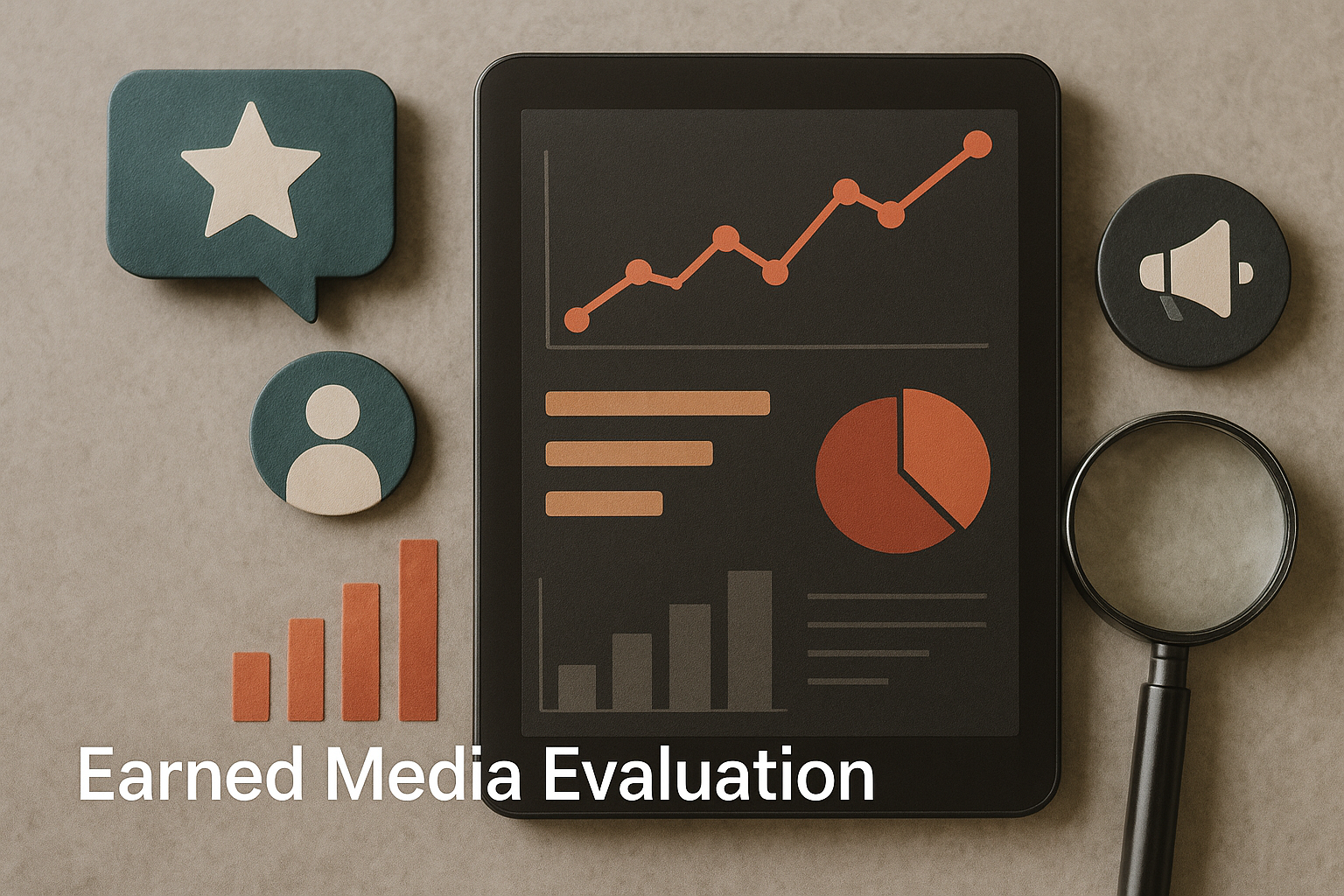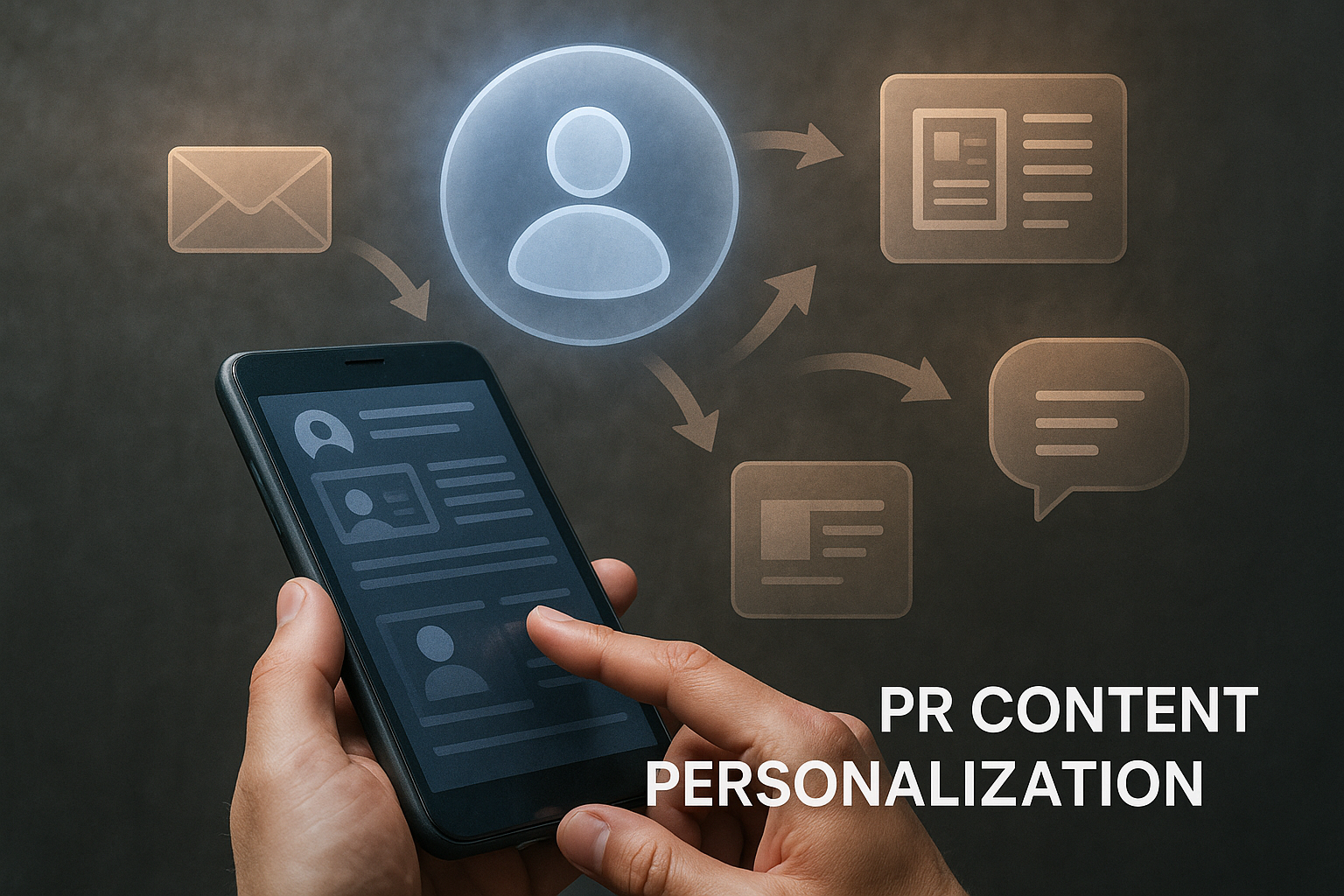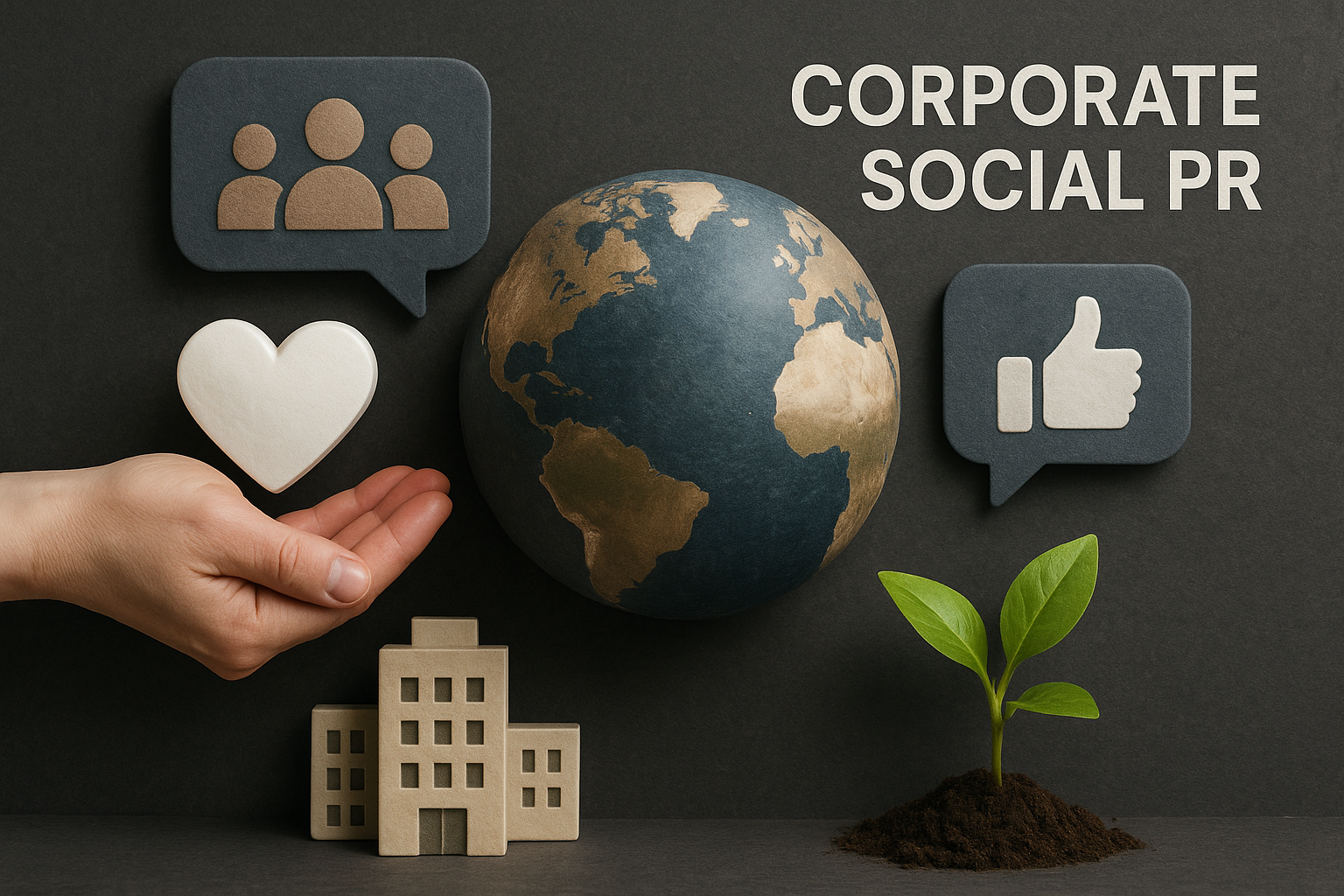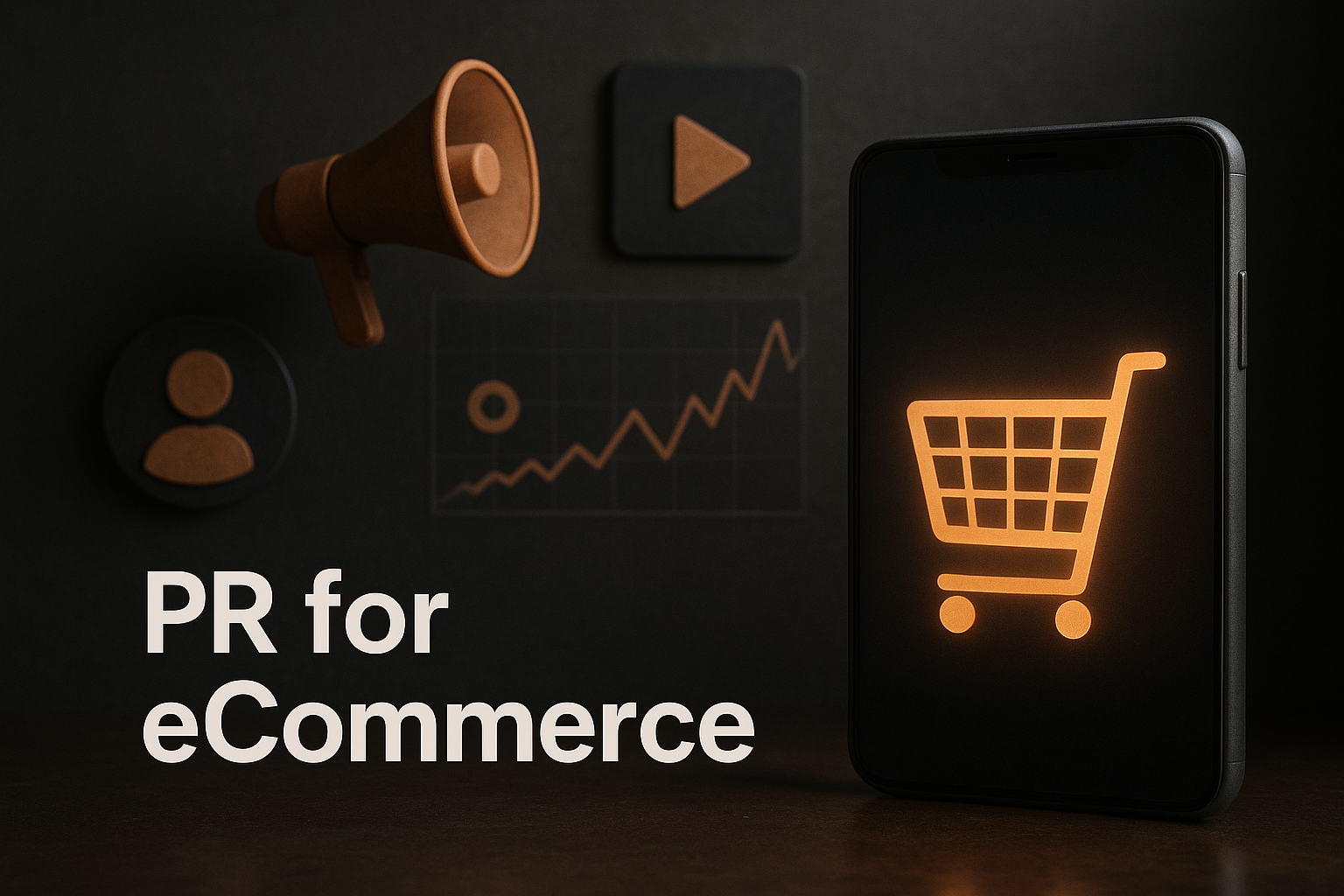Earned media evaluation is the key to understanding true brand impact and creating lasting connections in a competitive world.
It’s easy to count clicks. It’s easy to buy ads. But what happens when people talk about you without being paid? That’s where the real test begins. Earned media has always carried more weight than owned or paid. A headline in a trusted paper. A mention from the right influencer. A story that spreads because people believe it. None of that can be forced. It has to be earned.
And that’s why earned media evaluation matters. It’s not about stacking up clippings in a folder or bragging about impressions. It’s about asking: did this coverage change how people see us? Did it shift trust? Did it drive action?
The challenge is clear. PR doesn’t live in neat spreadsheets. It moves in conversations, reputations, and moments that are harder to pin down. Still, measuring it is possible and necessary.
Because without proof, PR can look like noise. With proof, it becomes a business driver. So, as we break this down, we’ll look at what to measure, how to measure it, and most importantly, how to show that earned media isn’t just attention to its impact.
Understanding earned media in today’s PR world
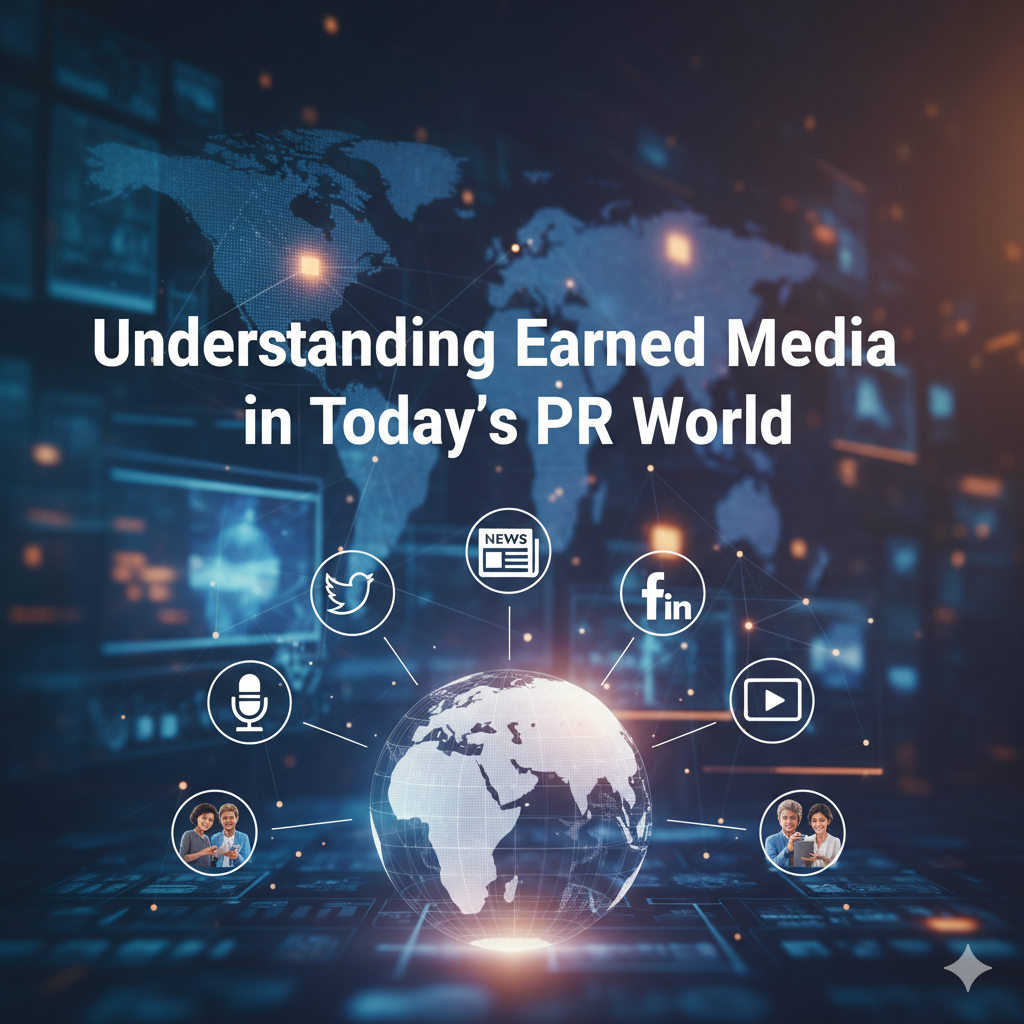
It starts simple. Someone talks about your brand. Maybe a journalist writes a feature. Maybe a blogger shares a review. Or maybe a customer posts something that takes off. You didn’t pay for it. You didn’t script it. Still, it’s out there shaping how people see you. That’s earned by the media.
What earned media really means
Think of it as the spotlight you don’t control but desperately need. Paid media lets you buy attention. Owned media lets you tell your own story. But earned media? That’s trust borrowed from others. When a respected source speaks for you, people listen differently. It feels real. It feels credible. And that credibility is what money alone can’t buy.
Why it matters more now
The digital world never sleeps. News cycles move in minutes. Social platforms amplify voices instantly. In this kind of environment, one strong earned mention can reach further than any ad campaign. At the same time, one negative story can ripple louder than a press release. That’s why earned media evaluation has become a core part of PR strategy. It’s no longer enough to celebrate coverage; you have to understand the impact behind it.
The difference from paid and owned
Here’s the simplest way to break it down. Paid media is rented space. You pay for visibility, but the trust comes in smaller doses. Owning media is your property. Your website, your blog, your channels. You control the story, but people know it’s your voice. Earned media, though, is different. It’s like a friend recommending a book. It feels natural. It carries weight. And because it’s not forced, it sticks longer in people’s minds.
The trust factor
Trust is the real currency. You can pour millions into ads and still not get close. Then one genuine nod from the right voice changes everything. A respected journalist, a trusted influencer, even a well-placed feature, and suddenly the message carries weight no budget can buy.
That’s why companies like Impact Authority don’t just count mentions. They look at what kind of mentions matter, and whether the story came from a place that people actually believe. Who’s saying it? How are they saying it? And how does the audience respond?
The evolving landscape
But let’s be clear. Earned media today isn’t just traditional press. It’s podcasts, a LinkedIn thought piece. It’s TikTok creators sparking conversations. The lines between influencer shout-outs, customer advocacy, and journalist coverage are blurring.
That means brands need a wider lens when they evaluate earned media. The old method of counting clippings feels outdated in a world where stories spread through shares, comments, and reposts.
Why clarity matters
Without clarity, PR looks like a gamble. You might celebrate coverage without knowing if it changed anything. You might chase numbers without realizing they don’t drive trust. That’s why understanding earned media in today’s context is step one. Before you can measure, you need to know what counts. Before you can prove impact, you need to see how people interact with it.
Bringing it together
So, earned media isn’t just about visibility. It’s about influence. It’s the story others tell about you, carried through channels you can’t control. That’s what makes it powerful. But also breakable. In a world overflowing with noise, that kind of attention feels rare and fragile. The more you understand it, the better chance you have to measure it, guard it, and let it grow into something stronger.
The challenge of PR campaign performance measurement

Measuring PR has always been tricky. Ads have clicks. Sales teams have numbers. But PR? It works in influence, reputation, and perception. Those things don’t fit neatly into spreadsheets.
Why simple numbers don’t cut it
For years, PR teams leaned on easy metrics. Impressions. Reach. Clip counts. The higher the number, the bigger the celebration. But here’s the problem—numbers don’t always mean impact. A million impressions might sound huge, but if the story missed the mark, what did it really change? Did it bring trust? Did it shift behavior? Or was it just noise?
The quantity vs. quality trap
This is where most campaigns stumble. It’s tempting to show volume—how many outlets picked up the story or how many times the brand name appeared. Yet not all coverage is equal. A thoughtful feature in a respected publication can outweigh dozens of short mentions elsewhere. PR campaign performance measurement has to move past counting and start weighing. It’s not just how much coverage, but what kind and why it matters.
The problem of proving value
Here’s the real challenge: connecting PR outcomes to business goals. Leadership often wants to see a straight line—coverage that leads to sales. But PR doesn’t work that way. It builds awareness, shapes reputation and opens doors for other marketing and sales efforts to work better.
That value is real, but harder to prove. And that’s why many teams struggle to justify budgets. Without strong earned media evaluation, PR risks being seen as “nice to have” instead of a growth driver.
Short-term vs. long-term results
Another challenge is timing. Ads can show instant results. A campaign goes live, clicks roll in. PR doesn’t always move like that. Sometimes coverage sparks immediate buzz. Other times, it plants seeds that grow months later. Measuring PR means accepting that impact unfolds in different layers—fast spikes and slow burns. Both matter, but both need different ways of tracking.
Too many tools, too much noise
Then there’s the flood of data. Social media listening. Media monitoring dashboards. Sentiment scores. Share of voice charts. The tools are endless, and yet, more data doesn’t always equal better insight. In fact, it can overwhelm. The real skill lies in cutting through the noise, pulling the right signals, and telling a story that makes sense to stakeholders.
Bridging the gap
So, what’s the way forward? Start by reframing the goal. Instead of chasing perfect numbers, focus on connecting the dots—coverage quality, sentiment, message pull-through, and business alignment. Use tools, but don’t let them dictate the whole story. Balance quantitative data with human analysis. That’s where the true picture emerges.
Why the challenge is worth it
Even with all its hurdles, measuring PR is essential. Without it, campaigns risk being undervalued. With it, they gain credibility. They move from being “good press” to being business-critical. PR campaign performance measurement isn’t just about reports—it’s about proof. Proof that stories can shape trust, proof that trust can drive behavior. Proof that PR has weight in the boardroom.
Media coverage impact analysis

Coverage looks good on paper. Your brand shows up in headlines. Articles get shared. Mentions keep stacking. But here’s the thing—visibility doesn’t always equal value. That’s why media coverage impact analysis steps in. It goes beyond counting mentions and asks the harder questions: did the coverage matter, and if so, how?
Reach isn’t everything
Big numbers catch attention. Ten million impressions sound impressive. But who were those people? Did the story land with the right audience, or was it just background noise in a crowded feed? Reach shows you scale. Relevance shows you impact. Without both, numbers don’t mean much.
The role of tone and sentiment
Not all coverage is positive. A feature can highlight your brand but frame it in the wrong light. That’s why tone matters. Media coverage impact analysis looks at sentiment—was the mention supportive, neutral, or critical? A single negative piece in a high-profile outlet can carry more weight than dozens of small, positive mentions. That’s the reality of reputation.
Context changes everything
Where your brand shows up can be just as important as how often. A passing mention buried in a long article doesn’t compare to a headline story that leads the narrative. And coverage in a respected industry journal often holds more authority than a short blurb in a mass outlet. Context turns simple visibility into meaningful influence.
Measuring engagement beyond the page
Coverage doesn’t end once it’s published. Stories spread. They get shared on LinkedIn, debated on Twitter, or quoted in industry blogs. Tracking that ripple effect gives you a fuller picture. Did people comment?, share? Did other journalists pick it up? This is where earned media evaluation connects dots—showing how one story can multiply its reach far beyond its original source.
Tools that help, but don’t replace judgment
Monitoring platforms can scan sentiment, flag mentions, and chart share of voice. They’re powerful, but they’re not perfect. Algorithms don’t always catch nuance. Sarcasm can be read as praise. Neutral mentions can be more valuable than positive fluff. That’s why human analysis still matters. The best evaluation blends data with interpretation.
Comparing against competitors
Impact also comes into sharper focus when seen in the context of competition. If your brand wins 40% share of voice in a key discussion while rivals fade into the background, that coverage has weight. If competitors dominate headlines and you barely get noticed, the impact shifts. Benchmarking keeps the analysis honest.
Why it all adds up
Media coverage impact analysis isn’t about chasing perfect scores. It’s about clarity. It shows what kind of attention you’re getting, what tone surrounds your brand, and how that attention spreads. Most importantly, it connects coverage back to credibility, trust, and influence—things no raw number can capture.
Going deeper: Quality over quantity metrics
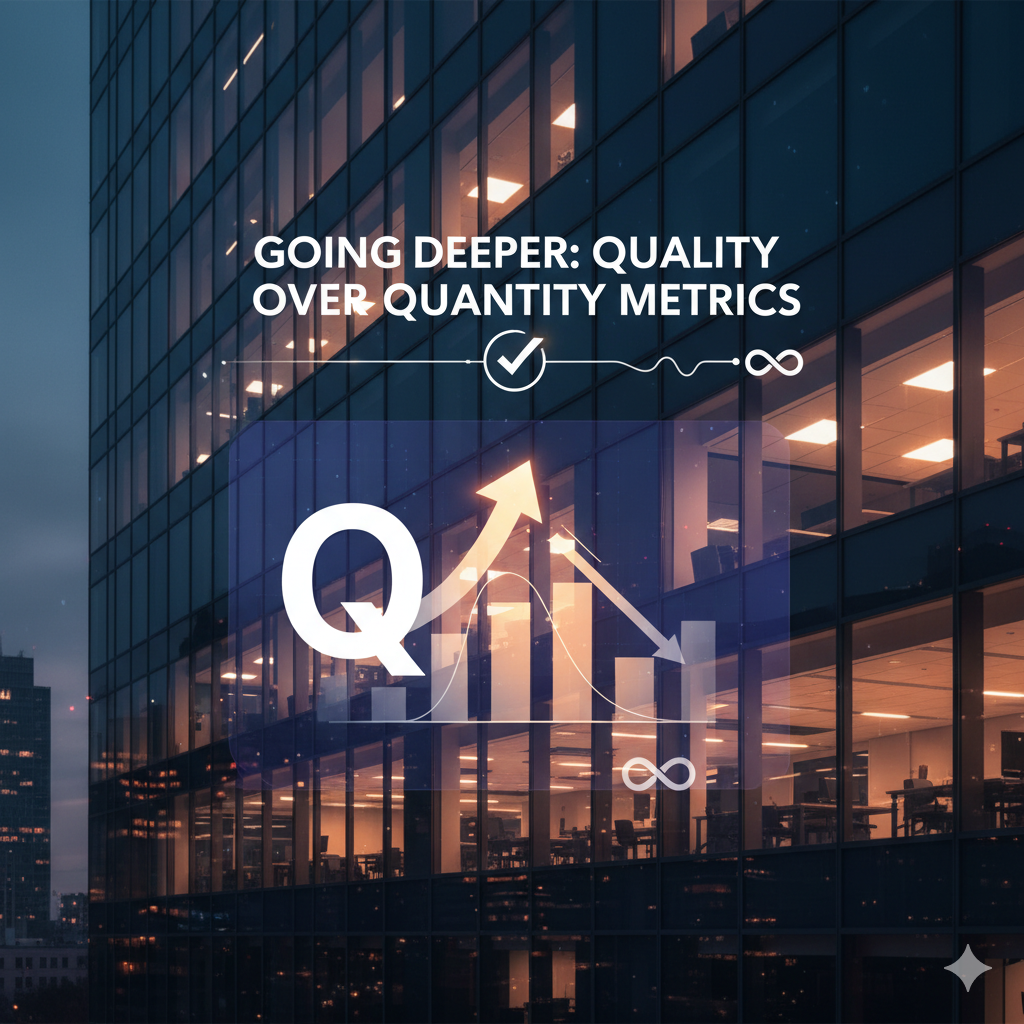
Numbers feel safe. They look impressive in a report. A hundred mentions here. A thousand shares there. But numbers alone don’t tell the full story. That’s the trap thinking more coverage always means better results. In reality, quality often beats quantity.
Message pull-through matters
It’s not enough that your brand name appears. What really matters is whether your key messages land. Did the article highlight your expertise? Did it mention your innovation, your values, or the point you wanted to push? A mention without message pull-through is like applause without meaning it’s noise, not impact.
Authority of the source
Not all outlets carry the same weight. A single feature in The Wall Street Journal can outshine dozens of mentions in smaller blogs. Authority amplifies trust. When coverage comes from respected journalists, analysts, or industry leaders, it shapes perception differently. This is where earned media evaluation goes deeper by asking not just who mentioned you, but who stood behind the story.
Relevance over reach
Here’s the truth: a small but highly relevant audience can mean more than millions of passive readers. For example, coverage in a niche industry magazine might spark real conversations among decision-makers. On the other hand, a generic mention on a mass site might get skipped over. Reach is scale. Relevance is connection. Both matter, but relevance often drives results.
Engagement signals
Look beyond the page. Did the story trigger reactions? Were people sharing it on social media, debating it in forums, or linking back to it in blogs? Engagement shows that coverage moved people to act. These signals are subtle, but they separate forgettable mentions from stories that stick.
Sentiment shapes perception
A positive mention adds value. A neutral one adds balance. A negative one forces a response. Sentiment is more than a mood check; it tells you how the audience interprets your brand. Two articles with the same reach can have completely different outcomes depending on tone.
The balance between data and judgment
It’s tempting to chase metrics you can measure easily. But some of the most important signals require human judgment. Algorithms may miss nuance, humor, or cultural context. That’s why quality metrics often come from blending both data to map the field, and analysis to make sense of it.
Why quality drives long-term value
Quantity can deliver bursts of visibility, but quality builds reputation. The right story, in the right place, told the right way that’s what shapes how people trust your brand. Over time, those moments add up. They create the foundation for stronger customer loyalty, better business opportunities, and a brand presence that lasts longer than a news cycle.
Earned media ROI assessment
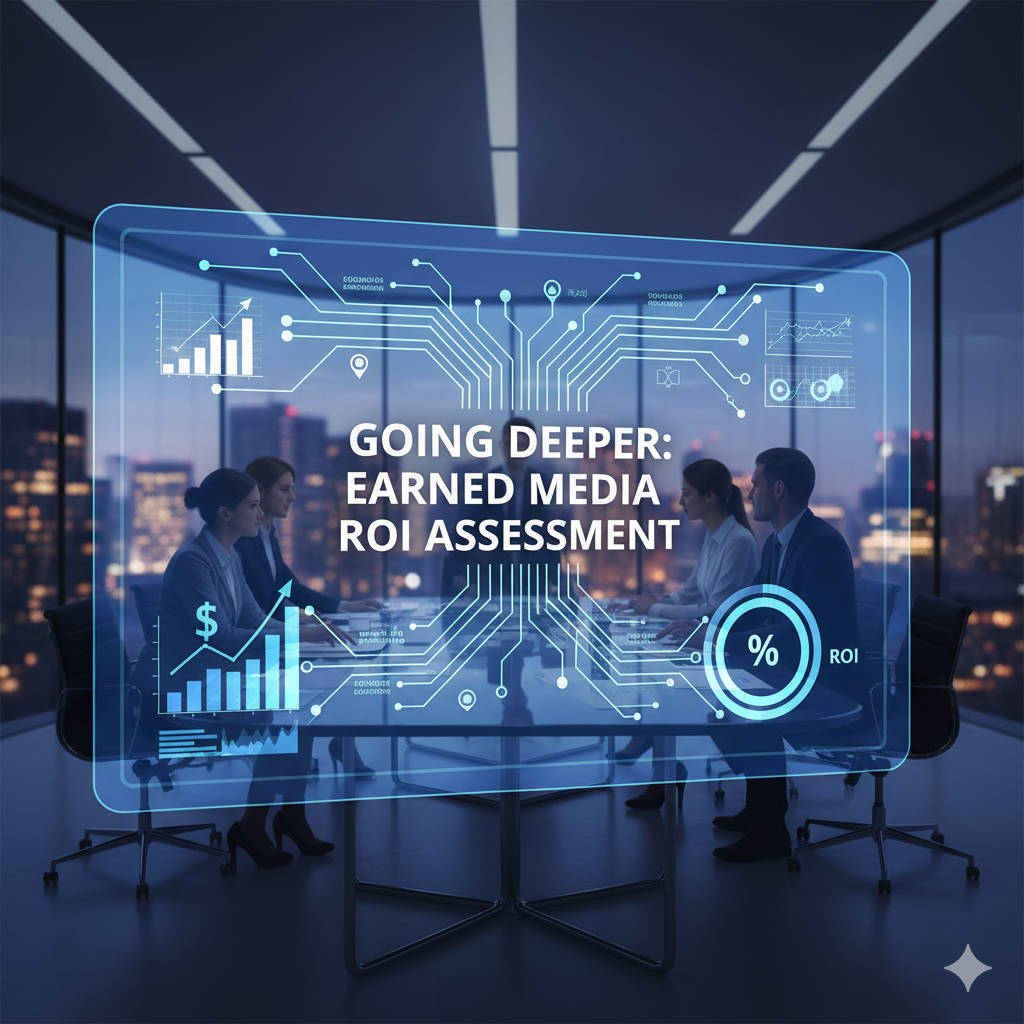
PR often gets the tough question: what’s the return? Executives look for numbers. They want 1 clear proof that every dollar spent delivers value. But earned media doesn’t always behave like ads or sales. Its impact runs deeper, sometimes slower, and often harder to pin down. That’s where earned media ROI assessment steps in.
The challenge of ROI in PR
With paid campaigns, you track spend versus clicks. With sales, you track cost versus revenue. But PR? It works in influence, reputation, and credibility. Those things don’t translate neatly into dollars. And yet, without showing return, PR can look like an expense instead of an investment. That’s why earned media evaluation needs to link back to ROI—even if the path isn’t always direct.
Connecting media to outcomes
The goal is to move beyond vanity numbers. Instead of just saying “we got coverage,” the better question is “what did that coverage change?” Did website traffic spike after a feature? Did leads increase? Did branded searches grow? Even small shifts point to influence. The trick is connecting media moments to measurable actions.
Attribution models for PR
PR rarely works alone. It sparks awareness that feeds into marketing, which supports sales. That makes attribution tricky. However, by using multi-touch models, you can trace where earned media played its role. Maybe it wasn’t the final push that closed a deal, but it could have been the first spark that got someone interested. That spark matters.
Comparing earned against paid
Another way to frame ROI is by comparing costs. How much would it have cost to buy the same visibility through ads? Often, the earned version comes at a fraction of the price—and with more credibility. This isn’t a perfect measure, but it helps leaders see the financial weight of PR compared to traditional marketing.
The long-term payoff
Earned media ROI assessment should also look beyond immediate wins. A strong reputation doesn’t just drive sales this quarter—it protects the brand in tough times, attracts talent, and builds investor confidence. These outcomes don’t show up overnight, but they carry enormous value. Ignoring them means underestimating what PR truly delivers.
Using the right mix of metrics
The best ROI assessments balance hard numbers with softer signals. Web traffic, leads, and conversions are important. But so are shifts in sentiment, share of voice, and thought leadership. One proves short-term results. The other builds long-term trust. Together, they show the full return of earned media.
Why ROI matters now more than ever
Budgets are tighter. Leadership teams demand accountability. PR can no longer rely on goodwill alone. By investing in earned media ROI assessment, brands prove that coverage isn’t just nice headlines its business impact. It shows PR is not only about awareness, but also about driving growth, protecting reputation, and fueling long-term success.
Tools and frameworks for earned media evaluation

Measuring PR impact isn’t guesswork anymore. The tools exist. The frameworks exist. The challenge is choosing the right mix—and knowing how to use them without drowning in data.
Media monitoring platforms
Start with the basics. Tools like Cision, Meltwater, and Muck Rack track coverage across outlets, regions, and platforms. They count mentions, map reach, and even run sentiment analysis. Useful, yes. But they’re only the first layer. They tell you what happened, not always why it mattered. That’s where human judgment steps in.
Social listening tools
Earned media doesn’t stop at headlines. It spills into social feeds, forums, and conversations you can’t control. Tools like Brandwatch, Sprout Social, or Talkwalker give you a way to track those ripples. Did a story spark a wave of comments? Did influencers amplify it? Social listening captures those echoes and shows how far coverage travels beyond its first stop.
Analytics connections
Coverage is powerful, but connecting it to business outcomes is even stronger. Linking PR tools with Google Analytics or CRM systems helps show whether earned mentions drove traffic, leads, or conversions. It’s not always a perfect line, but even small signals prove PR isn’t just about visibility it’s about results.
Frameworks for clarity
Tools are only half the story. Frameworks make sense of the noise. The AMEC Integrated Evaluation Framework, for example, gives structure to PR reporting. It helps teams move from outputs (how many mentions) to outcomes (what changed). Another useful lens is Barcelona Principles, which guide how PR impact should be measured responsibly. These frameworks keep measurement from slipping back into vanity metrics.
Mixing automation with analysis
Algorithms can scan thousands of mentions in seconds. They’re fast. They’re efficient. But they don’t always get nuanced. A sarcastic tweet might be flagged as positive. A neutral mention could carry more weight than glowing praise. That’s why the best earned media evaluation blends automation with human review. Data gives scale. Analysis gives meaning. Together, they give the truth.
Customizing to fit the brand
No single tool or framework works for everyone. A global consumer brand needs wide monitoring. A niche B2B company may only care about five key trade outlets. That’s why evaluation has to be customized. Tools provide the inputs. Frameworks provide the structure. But the brand’s goals decide which signals matter most.
The bigger picture
Tools and frameworks don’t replace strategy, they support it. They give proof, clarity, and direction. But at the end of the day, earned media evaluation isn’t about pretty dashboards. It’s about showing impact. Did the story shift perception? Did it strengthen trust? Moreover, did it push the business forward? That’s what leaders want to see.
Beyond the numbers: Reputation and relationship value

Not everything that matters shows up on a dashboard. Numbers tell a story, sure, but they don’t always tell the whole one. Some of the real wins in PR live in spaces where spreadsheets can’t measure reputation, trust, relationships. They’re invisible on paper, yet they decide how strong a brand really is when the spotlight shifts.
Reputation as silent currency
One good headline can do more than add eyeballs. It can make people believe. Belief turns into reputation, and reputation when you think about it is a kind of silent currency. Customers stick around longer. Partners lean in closer. Even employees feel a little prouder to wear the badge. Can you track that on a chart? Not easily. But the value lingers far longer than a spike in impressions.
Playing the long game of trust
Trust doesn’t drop like a notification. It grows, bit by bit, every time a story paints the brand as credible, consistent, or human. And this is where earned media evaluation takes on a different role. It’s less about counting mentions and more about asking: did this coverage move people closer to believing us? Did it make the brand feel open, approachable, worth listening to?
Relationships that ripple outward
Here’s the thing: reputation doesn’t stand alone. It flows into relationships with journalists, influencers, and the audiences they reach. When a journalist respects how a brand handles information, they write again. When an influencer genuinely enjoys the product, they don’t just post once they advocate. These ripples don’t look dramatic on a graph, but they fuel tomorrow’s opportunities.
Where numbers fall short
It’s tempting to obsess over clean data. Graphs look sharp in a presentation. But numbers can only go so far. They can’t measure how quickly a loyal community defends a brand in a crisis. They can’t capture why someone feels proud to join a company instead of another. If you only chase clicks, you risk missing the bigger picture.
Blending metrics with meaning
The smarter move is balance. Numbers still matter, but they mean more when paired with stories. A surge in website visits? Impressive but it hits harder if the traffic came from a trusted publication. Positive sentiment scores? Useful but more powerful if they mirror what customers are saying in reviews or community forums. Metrics alone speak in fragments. Narratives stitch the story together.
The hidden ROI of patience
Reputation and relationships rarely pay off in days. They show their worth in moments of pressure when a launch needs instant credibility or when a crisis demands trust. Strong brands don’t scramble to convince; they draw from trust already earned. That’s the real return, quiet but compounding, like interest in the bank.
Beyond dashboards and charts
So yes, earned media evaluation has to include numbers. But the bigger truth is this: dashboards prove what’s happened; reputation prepares you for what’s next. Relationships keep doors open. Trust keeps audiences listening. And together, they deliver the kind of value no pie chart can measure.
Building a balanced evaluation strategy

PR isn’t math. At least, not the kind that comes with one neat formula. You can’t just plug in impressions, multiply by clicks, and get the real story. It’s messier than that. And maybe that’s a good thing. Because building a balanced evaluation strategy means admitting that success in PR wears more than one face.
Mixing hard numbers with soft signals
Data feels safe. It looks sharp on a chart, tidy in a report. But it doesn’t always explain why people actually care—or why they don’t. That’s where softer signals step in. A journalist called back. A comment thread that runs longer than expected. A brand that sparks a real conversation. These things don’t sit neatly in spreadsheets, yet they often carry the weight. Numbers catch attention. Soft signals explain impact.
Short-term sparks versus long-term value
We’ve all seen it. One big media hit, traffic spikes overnight, everyone in the team chat drops fireworks emojis. Feels good. But here’s the question: does it hold? Balanced evaluation asks if those clicks turned into customers, if that burst of attention nudged trust a little higher. It separates the noise from the music. Quick sparks are fun. Long-term value builds staying power.
Layering multiple perspectives
Think of it like cooking. Metrics are the salt—essential, but not the whole dish. Add reach, engagement, sentiment, reputation. Suddenly, the flavor deepens. On their own, each piece is fine. But stack them together and the meal actually makes sense. The same goes for PR measurement. Without the layers, the picture stays flat. With them, you’ve got something people believe.
Making space for flexibility
Here’s the catch: what works today may fall flat tomorrow. Media moves fast, audiences shift, platforms rewrite the rules overnight. That’s why any evaluation worth trusting has to breathe. It can’t lock itself into one rigid formula. The smarter teams? They adjust. They drop what’s stale, test what’s new, and never assume last year’s plan will save this year’s story.
The role of earned media evaluation
And this is where earned media evaluation quietly ties it all together. It bridges the cold certainty of metrics with the warm messiness of human response. It says: yes, the numbers matter, but so does how people felt when they saw your story. Did they trust you more? Did they talk about you differently? Those answers may not sit in a spreadsheet, but they define real value.
Turning balance into action
Of course, balance isn’t just a nice phrase. It has to live in practice. That means setting intentions before you pitch, not after the coverage lands. It means knowing which numbers you’ll track, but also leaving space for the signals you can’t predict. And maybe most of all, it means asking better questions. Not just “how much did we get?” but “what did it mean?” Because in the end, balance isn’t built once. It’s built every time you measure, reflect, and adjust.
Future of earned media evaluation
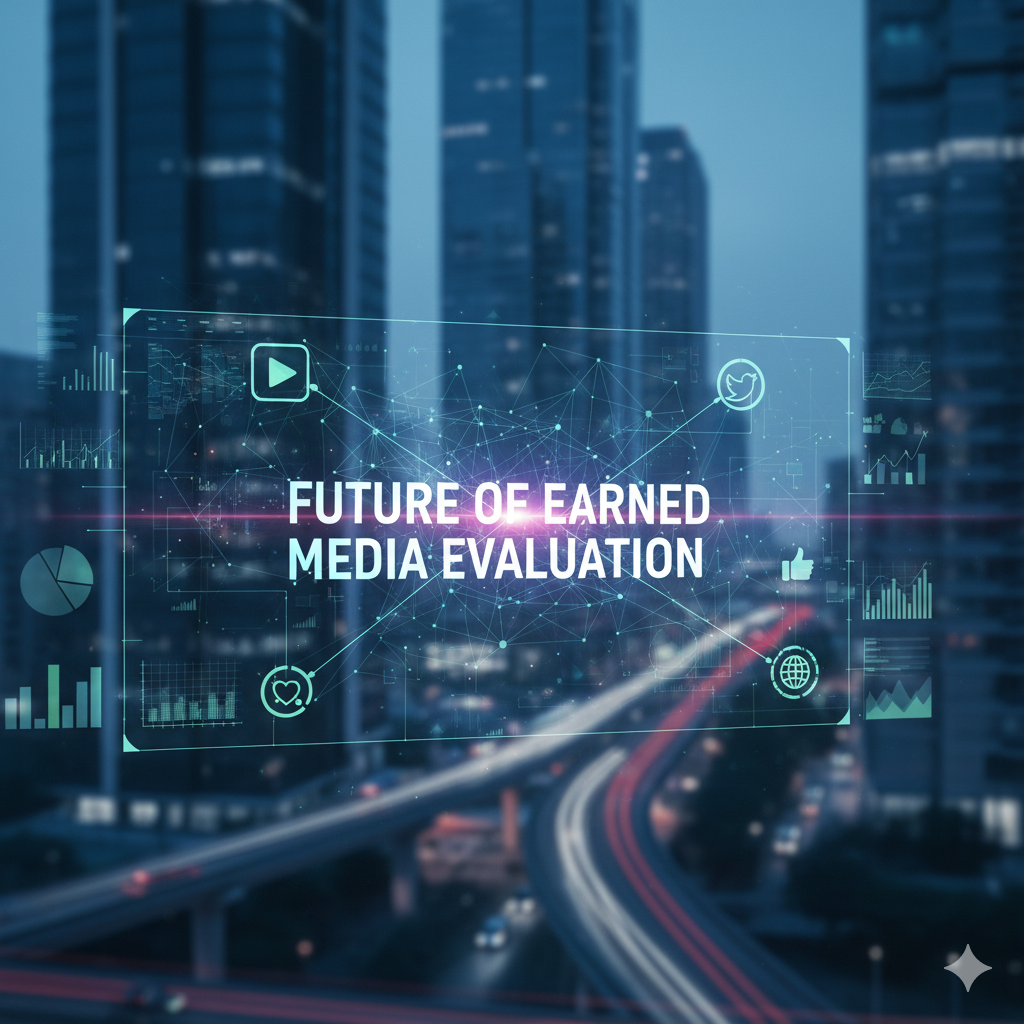
The way we measure PR today won’t look the same five years from now. It can’t. The media is shifting too fast, and audiences are shifting even faster. Old metrics still have value, but they don’t tell the whole story anymore. The future of earned media evaluation will lean on new tools, fresh thinking, and a stronger link between what’s measurable and what’s meaningful.
Tech is changing the game
AI and automation aren’t just buzzwords they’re already creeping into PR dashboards. Soon, they’ll help track coverage across languages, spot sentiment shifts in real time, and connect dots humans might miss. Imagine knowing within hours if a story is building momentum in a niche community before it hits the mainstream. That kind of foresight changes how brands respond. Still, the human touch will matter. Numbers might flag patterns, but people decide what’s truly important.
From reach to resonance
Reach used to be king. How many impressions, how many clicks that was the scoreboard. But tomorrow’s scoreboard looks different. It will ask: who actually listened? Who believed? Did the story move them to act, or did it fade in the scroll? That shift from reach to resonance will push PR teams to measure not just how far coverage traveled, but how deep it landed.
Personalization and context
Audiences are splintering. One-size-fits-all campaigns no longer hit home. The future of evaluation will factor in the context where the story showed up, who it reached, and why it mattered to that specific group. A glowing review in a niche publication may soon weigh more than a mention in a big national outlet, simply because of relevance. The trick will be knowing how to compare those apples and oranges without losing clarity.
Proving value to the business
Let’s be honest: PR has always been asked to “show the ROI.” That demand isn’t going anywhere. If anything, it’s getting louder. The future of earned media evaluation will need to tie results directly to business outcomes, leads generated, reputation lifted, communities strengthened. It’s not just about telling a story anymore; it’s about proving that story created a measurable impact on the bottom line.
What stays the same
Even as tools evolve and metrics shift, some truths won’t change. Reputation will always matter. Relationships will always matter. Trust will always sit at the core of PR. Numbers can capture pieces of that story, but they’ll never replace the human instinct to connect. That’s why the future isn’t about abandoning old ways, it’s about blending them with smarter, sharper methods.
Looking ahead
So where does this leave PR teams today? In transition. Straddling the old world of impressions and the new world of nuanced impact. The challenge will be learning to use data without drowning in it, leaning on tech without losing human judgment, and chasing reach without forgetting resonance. The brands that balance those pieces will be the ones ready for tomorrow.
Conclusion
Here’s the thing PR was never just about the numbers. Numbers look good on a slide, sure. But people don’t fall in love with a brand because of a graph. They stick because of trust. Because of how a story made them feel.
Earned media evaluation is simply a way to check if all that effort is landing.
And yes, tools will get smarter. Dashboards will get fancier. But the heart of it won’t change. PR lives in people, not platforms.
So maybe don’t think of evaluation as the last step. Think of it as the thread running through the whole campaign. It connects the story to proof, and proof to progress.
That’s where the real value sits. Not in counting mentions but in showing that the story moved someone. Even just one.

